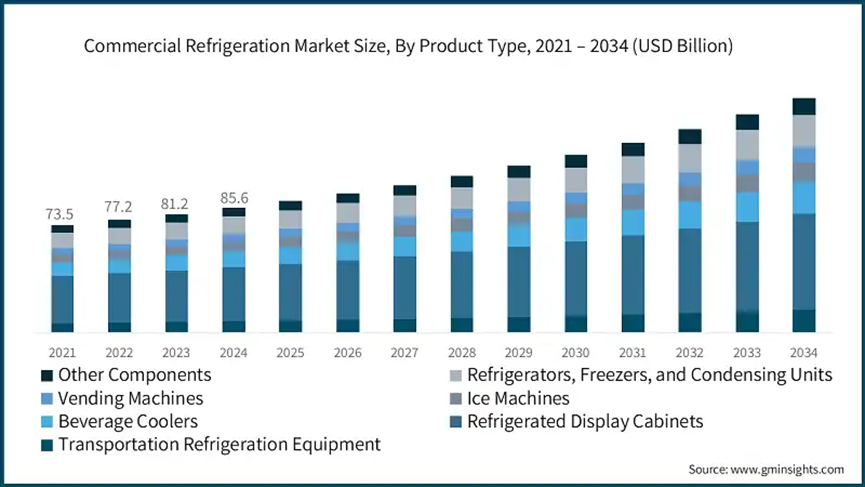The global commercial refrigeration market analyze ( Writer: Lance Lan)
The global commercial refrigeration market size was valued at USD 85.6 billion in 2024 and is expected to reach USD 161.0 billion by 2034, growing at a CAGR of 6.6% from 2025 to 2034, owing to the increase in the need for energy-efficient refrigeration systems in supermarkets, restaurants, and convenience stores. The Environmental Protection Agency (EPA) states that commercial refrigeration systems account for approximately 40% of the energy consumption of supermarkets in the United States. This has led to the development of new refrigeration systems that are efficient and cost-effective. Furthermore, the increase in the global demand for frozen and processed foods has also driven the demand for high-quality refrigeration systems.

Based on "product type", the commercial refrigeration equipment market is broken down into transport refrigeration equipment, refrigerated display cabinets, beverage coolers, ice machines, vending machines, refrigerators, freezers, and condensing units. The refrigerated cabinet segment dominated the commercial refrigeration equipment market in 2024, generating revenue of $37.2 billion and is expected to reach more than $66 billion by 2034.
JARN said that refrigerated display cabinets accounted for 50.4% of the commercial refrigeration market in 2021, capturing their importance in food storage and sales in retail stores.
With the increase in energy costs, more emphasis is placed on energy-efficient refrigerated display cabinets. To reduce energy consumption and maintain cooling performance, these cabinets have been equipped with LED lights, advanced insulation materials, and energy-efficient compressors.
Internet capabilities for refrigerated display cabinets are becoming more common, which makes business more efficient, minimizes waste, and enhances food safety.
A wide range of refrigerated display cabinets are now available with advanced design features such as adjustable shells, sliding doors, and customized sizes, providing better convenience for different products and space optimization at retail outlets.
Writer: Lance Lan


